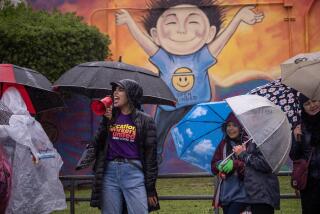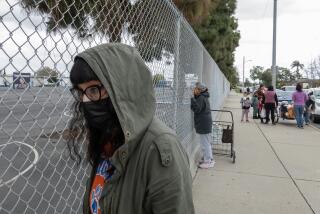Debate, angst and many questions emerge over L.A. school reopening plans
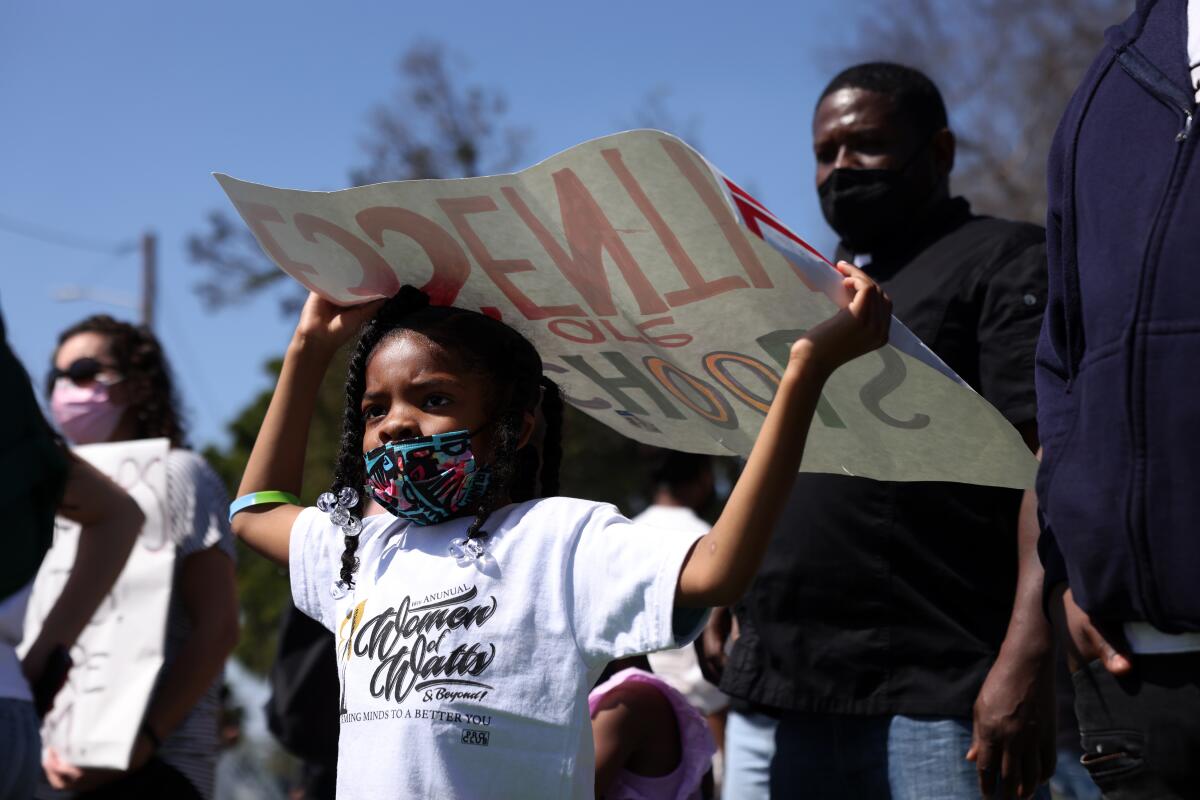
- Share via
Debate, angst and questions about reopening campuses in Los Angeles continued Saturday — days after district officials reached a deal with the teachers union on how and when to bring students back.
Parents at two rallies — one in South L.A. and another in Fairfax — talked of schools not opening quickly enough or in an effective way, especially for secondary school students. Callers in a “town hall” sponsored by the union and its allies expressed anxiety about returning to campus, while putting forward questions that allowed the union president to further explain the reopening plan and the union’s role in shaping it.
Union members will vote on whether to ratify the deal next week. The L.A. Board of Education unanimously approved the agreement in a special meeting Thursday. The district is asking parents to return a survey by Friday but will allow parents to change their minds at two-week intervals.
The choice will be difficult because the reopening plans are complex and not yet complete — and some parents complained Saturday about being left in the dark during months of negotiations between the L.A. Unified School District and United Teachers Los Angeles, which represents teachers, counselors, nurses and librarians.
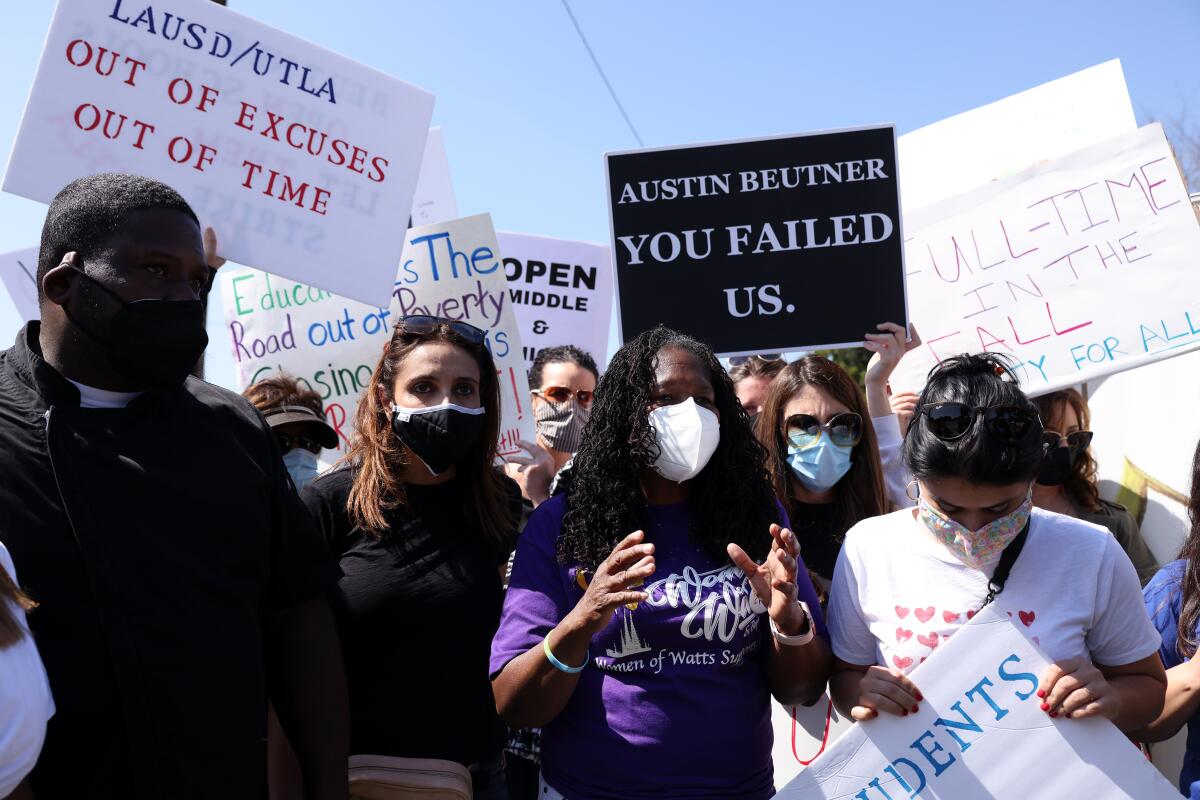
“We as parents are here to say bring us to the table,” said Lydia Friend, a South L.A. community activist who led a demonstration Saturday at Ted Watkins Memorial Park in Florence-Firestone. She and others were concerned about whether their grandchildren and children will get the interaction with friends and teachers that they desperately need. They also have questions about safety precautions and what learning will look like.
School board member Tanya Franklin, whose district includes Watts, attended the rally and agreed that parents have not had a strong voice in reopening plans.
“I don’t know that we’ve done enough to be deeply engaged with our families who have vastly diverse experiences,” Franklin said. “It’s obviously been such a challenge the last year. But they’re not wrong and need a stronger voice moving forward.”
Union President Cecily Myart-Cruz took questions related to that topic in a Saturday call-in co-sponsored by allied groups. Organizers said there were about 6,000 participants in simultaneous English and Spanish panels. L.A. Unified, the nation’s second-largest school system has about 465,000 students in kindergarten through 12th grade and about 75,000 employees.
Under the agreement, students would learn part time on campus in small, staggered groups and log in the rest of the time from home or work independently. Elementary school students will attend class for half a day Monday through Friday and day care will be available for students in kindergarten through eighth grade from 8 a.m. until 4 p.m., when they are not in class.
At the middle and high school levels, students will remain in the same classroom all day and will not be permitted to move freely around on campus. All of their academic work will remain online — even when they are on campus.
Families also have the option of keeping students at home full time, although at the elementary level, their daily schedules will change.
Myart-Cruz said this format would keep people safe — and also avoid disrupting the complex schedules of middle and high school students.
“There will be stretch breaks so students will not feel like they are trapped all day,” Myart-Cruz said.
No callers into the online town hall expressed views critical of the union, but there were questions that revealed anxiety and confusion, such as Juanita from the San Fernando Valley, who worried about sanitation given the shortages of soap and toilet paper that existed even before the pandemic.
The union leader noted the district’s pledge to double the cleaning staff and said that a COVID-19 task force at every campus would provide a forum for managing issues as they arise.
Among the details Myart-Cruz conveyed: No students would eat food in the classroom — because masks would be worn at all times inside. And no students would be allowed to use play structures. In addition, campuses would not reopen one by one as community health conditions improved — because that would allow wealthier areas, which have suffered less from the pandemic, to open first, further widening inequities. And no one — neither student nor employee — would be able to refuse taking a coronavirus test if they are returning to campus.
“It’s nonnegotiable on that because we are in a pandemic,” she said. “Everyone will be testing every two weeks.”
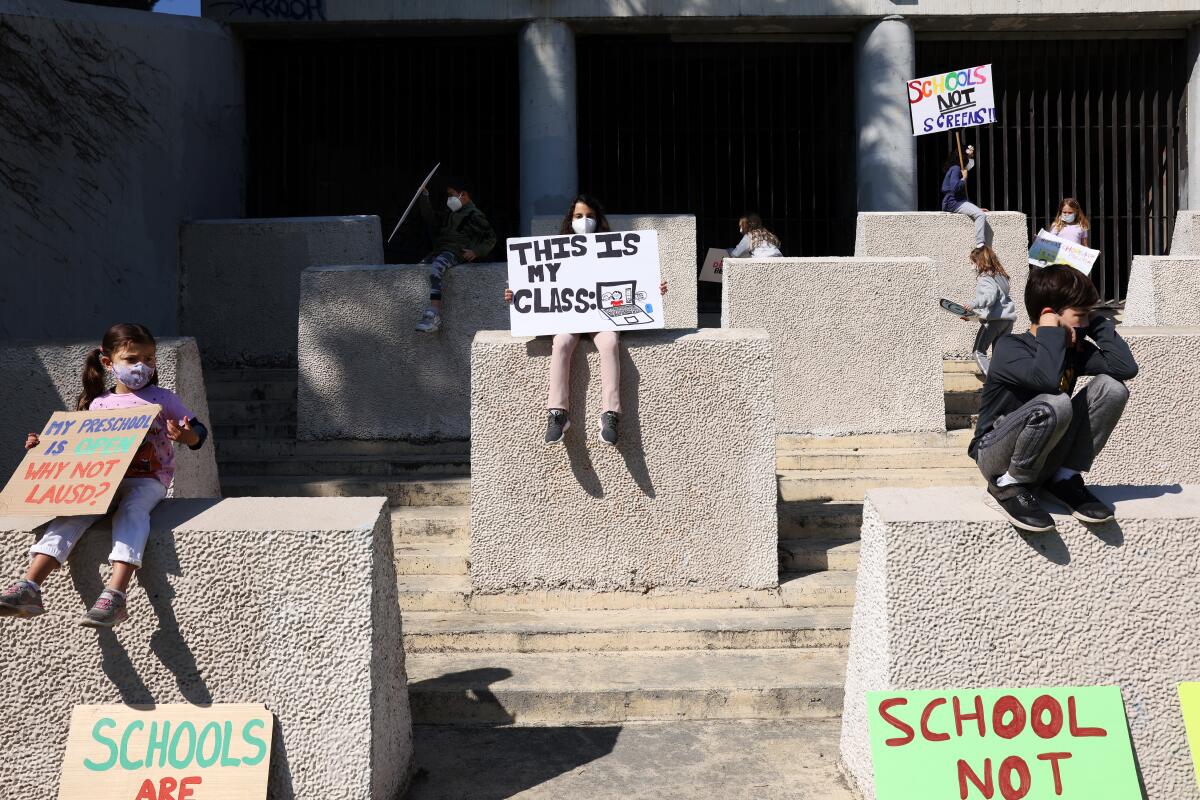
Participants in a demonstration at Pan Pacific Park in Fairfax expressed anger as well as doubts, holding hand-lettered signs declaring, “Zoom is not school” and “I miss my friends.” They chanted: “Open schools!” and “Five days in fall!”
Agnes Novie said both of her children — a 17-year-old daughter and 14-year-old son who attend Palisades Charter High School — have suffered academic and mental health problems during the pandemic. It’s hard to get them to leave their rooms, she added, as they struggle with isolation and losing all of the things that make high school special: the football games and pep rallies, the after-school clubs, lunching with friends.
She called the district’s reopening plan “atrocious” because of its limited on-campus hours and continued Zoom instruction but said her children are excited to return to school to see friends. But she’s become embittered toward district leaders and the teachers union, especially because campuses across much of the country have reopened much sooner and more fully.
“I’m frustrated and angry,” she said. “I don’t know why we haven’t figured this out.”
Her husband, Ross Novie, has led local efforts of parents who want to reopen schools and helped organize the Pan Pacific rally Saturday. It was among several open-schools-now events up and down the state — marking the first anniversary of campus shutdowns.
Those involved in the second demonstration included Kaelyn Gordon, 21, a Howard University student. She came home last year when her college shut down and has helped supervise siblings. Virtual learning “hasn’t been going so well,” she said, especially for a kindergarten sibling who receives less than two hours of live instruction each day.
Reopening schools will give the child her first experience in a classroom, but Gordon worried whether she’ll be able to catch up.
Parent Michelle Dorsey-Corbin said she intends to send her 6-year-old back to Purche Avenue Elementary in Gardena “because even part time is better than what she has now.”
But she’s concerned about the setup for her high school daughter, who would return to King/Drew Medical Magnet High School in Willowbrook simply to log in to online classes from there.
“I’m still trying to understand it,” Dorsey-Corbin said. “It does feel better, in a sense, because if you have questions there will be someone to answer.”
At least that’s her hope. She’s watched this year as her older daughter has struggled with homework and emailed questions to teachers that sometimes went unanswered.
The district is targeting mid-April for the return of elementary school students and later that month for middle and high school. The school year ends June 11.
More to Read
Sign up for Essential California
The most important California stories and recommendations in your inbox every morning.
You may occasionally receive promotional content from the Los Angeles Times.

